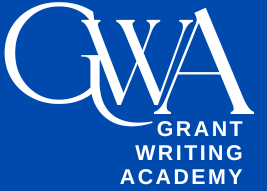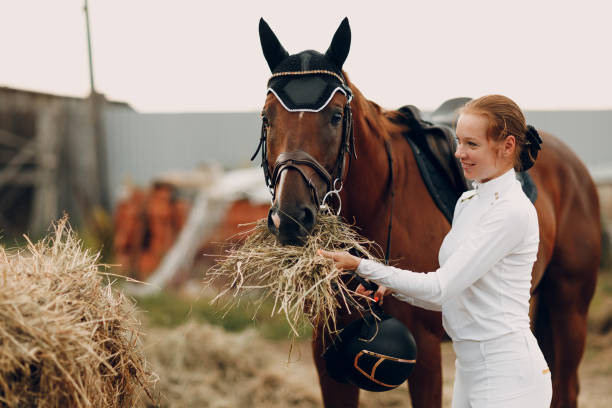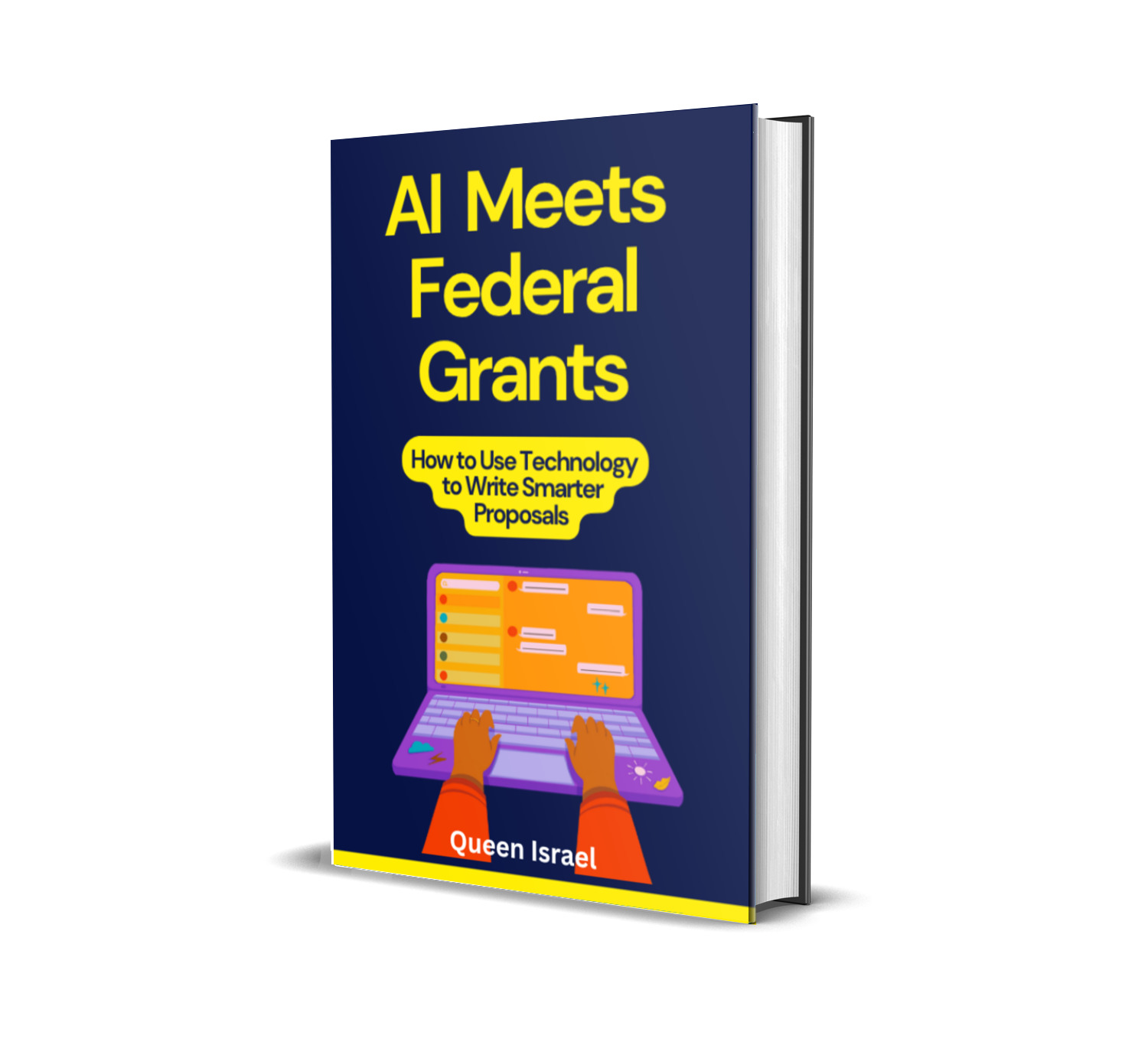Equestrian grants are financial awards provided by foundations, government bodies, private organizations, and corporations to support initiatives related to horses and equestrian activities.
These grants can fund a variety of projects, from therapeutic riding programs and equestrian education to horse welfare initiatives and competitive teams. Understanding the different types of grants available and how they align with your organization’s goals is the first step toward securing funding.
Types of Equestrian Grants
- Therapeutic Riding Programs: These grants support programs that use horseback riding as a therapeutic tool for individuals with physical, emotional, or developmental challenges. For example, a grant might cover the costs of specialized equipment, training for instructors, or the maintenance of riding facilities.
- Equine Education: Funding for educational programs that teach horseback riding, horse care, and equestrian disciplines. This can include scholarships for riders, funding for instructional materials, or support for equestrian workshops and seminars.
- Horse Welfare Initiatives: Grants aimed at rescuing, rehabilitating, and rehoming horses. This might involve funding for veterinary care, shelter maintenance, or community outreach programs to promote responsible horse ownership.
- Competitive Equestrian Teams: Financial support for amateur or professional riders and organizations that participate in equestrian competitions. Grants can cover training costs, travel expenses for competitions, or the purchase of competition gear.
- Equine Research: Grants for scientific studies related to horse health, behavior, training methods, or equine-assisted therapy. This funding can support research projects at universities, independent studies by equine professionals, or collaborative research initiatives.
Why Equestrian Grants Are Essential
Equestrian programs offer unique benefits that extend beyond the love of horses. They provide therapeutic benefits to individuals with disabilities, promote physical fitness and discipline among riders, and advocate for the humane treatment of horses. However, running these programs requires significant resources, including horses, equipment, staff training, and facility maintenance. Equestrian grants help bridge the funding gap, ensuring that these valuable programs can continue and expand.
For instance, therapeutic riding programs often serve children and adults with disabilities, offering them improved physical coordination, emotional stability, and social interaction. Without grants, many of these programs would struggle to cover the costs of maintaining horses, purchasing adaptive equipment, and training qualified staff.
Moreover, grants can help raise awareness about critical issues in the equine community, such as retired racehorses’ welfare or the prevention of horse cruelty. By securing funding, organizations can advocate for better treatment and support for horses, influencing policies and public perception.
Where to Find Equestrian Grants
Finding the right grants requires a strategic approach. Below are key sources where you can discover equestrian grants tailored to your specific needs:
1. Government Grants
Government agencies offer a plethora of grants that can be applicable to equestrian programs. Here’s a closer look at some valuable sources:
- National Endowment for the Arts (NEA): While primarily focused on the arts, the NEA offers grants for programs that incorporate equestrian arts, such as equine dance performances or art projects inspired by horses. NEA Grants
- Department of Agriculture (USDA): The USDA provides grants related to agriculture and animal welfare, which can be leveraged for equine programs focused on horse welfare and conservation. For example, the USDA Rural Development programs may support equine facilities in rural areas. USDA Grants
- National Institute of Food and Agriculture (NIFA): Part of the USDA, NIFA offers funding for research and development projects, including those related to equine health and management. NIFA Grants
- State and Local Grants: Many states and municipalities have grant programs designed to support local equestrian initiatives. For example, California’s Agricultural Conservation Easement Program provides funding for projects that protect agricultural lands, which can include equestrian facilities. Check your state’s grant portal for specific opportunities. Grants.gov
2. Private Foundations and Charitable Organizations
Private foundations are a significant source of funding for equestrian causes. Here are some notable ones:
- The American Horse Council Foundation: Offers grants for research and programs related to the equine industry, including advocacy, education, and welfare initiatives. Horse Council Foundation
- The EQUUS Foundation: Focuses on supporting equine welfare and therapeutic riding programs across the country. They provide grants to nonprofits that promote the humane treatment of horses and leverage equine activities for therapeutic purposes. EQUUS Foundation
- The Dressage Foundation: Provides grants specifically for competitive equestrian athletes and educational programs that promote the discipline of dressage. This foundation supports riders in training, competition expenses, and educational workshops. Dressage Foundation
- The Robert and Margrit Mondavi Foundation: Funds equine education programs that emphasize responsible horse care and riding techniques. They support initiatives that promote sustainable equine practices and education. Mondavi Foundation
3. Equestrian Associations
Equestrian associations often have their own grant programs to support the sport and its community. Some prominent associations include:
- United States Equestrian Federation (USEF): Offers grants for competitive riders and equestrian organizations. These grants can help cover training costs, competition fees, and organizational expenses. USEF Grants
- American Quarter Horse Association (AQHA): Provides funding for programs that promote the Quarter Horse breed and equine education. They support events, educational workshops, and breed-specific research. AQHA Grants
- American Saddlebred Horse Association (ASHA): Offers grants for educational and competition purposes, supporting programs that enhance the Saddlebred breed and its riders. ASHA Grants
4. Corporate Sponsorships
Many companies within the equine industry, from tack shops and horse feed suppliers to equestrian apparel brands, offer sponsorships and grants to support equestrian programs. Here’s how to approach corporate sponsorships:
- Identify Potential Sponsors: Look for companies that align with your program’s mission and values. For example, a company specializing in therapeutic riding equipment would be an ideal sponsor for a therapeutic riding program.
- Create a Sponsorship Proposal: Develop a compelling proposal that outlines the benefits for the sponsor, such as brand exposure, community goodwill, and association with a positive cause.
- Reach Out Directly: Contact companies through their corporate social responsibility (CSR) departments or sponsorship managers. Personalize your communication to demonstrate your understanding of their brand and how your program aligns with their goals.
- Leverage Local Businesses: Don’t overlook local businesses that may be interested in supporting community-based equestrian initiatives. Building relationships with local sponsors can provide steady, ongoing support.
How to Apply for Equestrian Grants
Applying for equestrian grants involves several steps, each crucial to presenting your program effectively and meeting funders’ expectations. Here’s a detailed guide to help you navigate the application process:
1. Understand the Grant Requirements
Before diving into your application, thoroughly review the grant guidelines. Key aspects to consider include:
- Eligibility Criteria: Ensure your organization or program meets all the requirements, such as being a registered nonprofit, having a certain number of years in operation, or focusing on specific equestrian activities.
- Application Deadline: Keep track of deadlines and create a timeline to ensure you gather all necessary materials and submit your application on time.
- Funding Priorities: Align your program’s objectives with the funder’s mission and priorities. For example, if a grant focuses on therapeutic riding, emphasize how your program provides therapeutic benefits.
2. Develop a Compelling Narrative
Your grant application should tell a story that resonates with funders. Here’s how to craft a compelling narrative:
- Introduction: Start with a strong opening that captures the essence of your program. For example, “At [Your Organization], we believe in the transformative power of horses to heal and inspire individuals with disabilities.”
- Problem Statement: Clearly define the issue your program addresses. Use data and anecdotes to illustrate the need for your initiative. For instance, “According to the National Therapeutic Riding Association, over 2 million individuals could benefit from therapeutic riding programs each year.”
- Objectives and Goals: Outline what you aim to achieve with the grant. Make your goals specific, measurable, achievable, relevant, and time-bound (SMART). For example, “Increase participation in our therapeutic riding program by 30% over the next year.”
- Methods and Activities: Describe the activities you will undertake to achieve your goals. Include details about horse care, training methods, participant selection, and program structure.
- Impact: Explain the expected outcomes and how they align with the funder’s priorities. Use evidence to support your claims, such as testimonials from participants or previous success stories.
3. Provide Supporting Documents
Supporting documents strengthen your application by providing evidence of your organization’s credibility and capacity. Commonly required documents include:
- Proof of Nonprofit Status: Most grants require organizations to have 501(c)(3) status or equivalent. Include your IRS determination letter or other official documentation.
- Financial Statements: Provide recent financial statements, including budgets, income statements, and balance sheets, to demonstrate financial transparency and responsibility.
- Letters of Support: Include testimonials from community leaders, partners, or beneficiaries who can vouch for your program’s impact and effectiveness.
- Program Brochures or Flyers: Visual materials that showcase your program can help funders understand your work better.
4. Set Measurable Goals
Funders want to see how their investment will lead to tangible results. Setting measurable goals involves:
- Defining Success Metrics: Identify specific indicators that will show progress toward your goals. For example, the number of new participants, improvement in participants’ physical abilities, or successful rehoming of rescued horses.
- Data Collection Methods: Explain how you will collect and analyze data to track your progress. This could include surveys, assessments, or tracking participation rates.
- Reporting: Outline how you will report your findings to the funder, including the frequency and format of updates.
5. Follow the Application Instructions
Adhering to the funder’s guidelines is crucial. Common mistakes to avoid include:
- Ignoring Formatting Requirements: Ensure your application follows the specified format, whether it’s a particular font size, page limit, or document type.
- Missing Sections: Double-check that you’ve included all required sections and answered all questions comprehensively.
- Submitting Late: Late applications are often disqualified, so prioritize meeting deadlines.
Strategies for Increasing Your Grant Success Rate
Securing grants can be competitive, but employing effective strategies can significantly boost your chances of success. Here are some proven approaches:
1. Build Relationships with Funders
Establishing a connection with potential funders can set your application apart. Here’s how to build meaningful relationships:
- Research Funders: Understand the funder’s mission, values, and past grant recipients. Tailor your approach to align with their interests.
- Attend Events: Participate in funder-hosted events, webinars, or workshops to network and learn more about their funding priorities.
- Communicate Regularly: Keep funders updated on your program’s progress, even before you apply for a grant. Share success stories, milestones, and updates that showcase your organization’s growth and impact.
2. Collaborate with Other Organizations
Partnering with other organizations can enhance your proposal by demonstrating community support and shared goals. Consider:
- Joint Projects: Collaborate on projects that align with both organizations’ missions. For example, partnering with a local school to provide equestrian therapy for students.
- Resource Sharing: Share resources such as facilities, expertise, or equipment to strengthen your program’s capacity and appeal to funders.
- Letters of Collaboration: Include letters from partner organizations in your grant application to showcase a united effort and broader community impact.
3. Highlight Your Successes
Showcasing your program’s achievements can build credibility and convince funders of your effectiveness. Here’s how to highlight your successes:
- Use Data: Present statistics that demonstrate your program’s impact, such as the number of participants served, improvement rates, or successful outcomes.
- Share Stories: Include personal stories and testimonials from participants, staff, or beneficiaries that illustrate the real-life benefits of your program.
- Showcase Awards and Recognition: Mention any awards, certifications, or recognitions your organization has received to enhance your reputation.
4. Get Feedback Before Submitting
Before finalizing your application, seek feedback to ensure clarity and effectiveness. Steps to take include:
- Peer Review: Have colleagues or partners review your application for content accuracy and coherence.
- Professional Editing: Consider hiring a professional grant writer or editor to polish your proposal and eliminate errors.
- Mock Submission: Simulate the submission process to identify any potential issues or missing elements.
5. Demonstrate Sustainability
Funders are more likely to invest in programs that demonstrate long-term sustainability. To convey sustainability:
- Diversify Funding Sources: Show that your program has multiple funding streams, reducing reliance on a single source.
- Long-Term Planning: Present a clear plan for maintaining and growing your program beyond the grant period, including strategies for future funding and resource management.
- Capacity Building: Highlight efforts to build your organization’s capacity, such as staff training, infrastructure improvements, or community partnerships.
Data, Sources, and Statistics
Incorporating data and statistics into your grant application can strengthen your case by providing evidence of need and effectiveness. Here are some relevant data points and sources:
- Therapeutic Riding Impact: According to the National Therapeutic Riding Association (NTRA), over 2 million individuals benefit from therapeutic riding programs annually in the United States. These programs have been shown to improve physical coordination, emotional stability, and social interaction skills.
- Equine Welfare Issues: The American Society for the Prevention of Cruelty to Animals (ASPCA) reports that thousands of horses enter rescue shelters each year, with many requiring extensive rehabilitation before they can be rehomed.
- Economic Impact: The American Horse Council estimates that the horse industry contributes over $122 billion to the U.S. economy annually, highlighting the significant role horses play in various sectors, including recreation, agriculture, and therapy.
- Grant Success Rates: While success rates vary by funder, the Grant Professionals Association (GPA) notes that well-prepared applications that closely align with funder priorities have a higher chance of success, often exceeding 30%.
- Funding Trends: According to GrantWatch, grants for animal welfare and therapeutic programs have seen a steady increase over the past five years, reflecting growing societal interest in these areas.
Real-Life Examples and Case Studies
Understanding how other organizations have successfully secured equestrian grants can provide valuable insights and inspiration. Here are a couple of real-life examples:
Case Study 1: Healing Hooves Therapeutic Riding Center
Challenge: Healing Hooves wanted to expand its therapeutic riding program to serve more children with autism but lacked the necessary funding for additional horses and specialized equipment.
Solution: They applied for a grant from the EQUUS Foundation, highlighting their program’s success in improving participants’ social and motor skills. The application included detailed success stories, data on participant progress, and a clear plan for scaling the program.
Outcome: Healing Hooves received a $50,000 grant, allowing them to purchase two additional horses, upgrade their riding facilities, and hire a certified therapeutic riding instructor. As a result, they increased their participant capacity by 40% and received positive feedback from families and community partners.
Case Study 2: Equine Education for All
Challenge: Equine Education for All aimed to provide horseback riding lessons to underserved youth in rural areas but struggled with funding for equipment and instructor training.
Solution: They secured a grant from the American Quarter Horse Association (AQHA) by showcasing their commitment to promoting the Quarter Horse breed and providing educational opportunities. Their application included a detailed budget, partnership letters from local schools, and testimonials from past participants.
Outcome: The AQHA grant of $30,000 funded new riding gear, certified instructors, and outreach programs. Equine Education for All expanded its services to three additional rural communities, reaching over 150 new students and fostering a love for equestrian activities among youth who previously had limited access.
Useful Resources and Tools
Navigating the grant application process can be daunting, but numerous resources and tools can simplify the journey:
- Grants.gov: The most comprehensive database for federal grants in the United States. Use filters to search for equestrian-related grants. Grants.gov
- Foundation Directory Online: A subscription-based database that provides detailed information on private foundations and their grant-making activities. Foundation Directory Online
- GrantWatch: Lists grants available for nonprofits, including those focused on animal welfare and therapeutic programs. GrantWatch
- National Therapeutic Riding Association (NTRA): Offers resources and support for therapeutic riding programs, including grant opportunities. NTRA
- Grant Writing Academy Newsletter: Subscribe to gain access to expert tips, strategies, templates, tools, and exclusive resources designed to enhance your grant writing success rates. Grant Writing Academy
Tips for Writing a Successful Grant Proposal
Crafting a winning grant proposal requires attention to detail, clarity, and alignment with the funder’s objectives. Here are some practical tips to enhance your proposal:
- Start Early: Give yourself ample time to research funders, gather necessary documents, and write a polished proposal. Rushed applications are more likely to contain errors and lack coherence.
- Be Clear and Concise: Avoid jargon and overly complex language. Clearly articulate your program’s goals, methods, and expected outcomes in a straightforward manner.
- Customize Each Application: Tailor your proposal to each funder’s specific guidelines and priorities. Generic applications are less likely to resonate with funders.
- Tell a Story: Use storytelling to illustrate the impact of your program. Personal anecdotes and vivid descriptions can make your proposal more engaging and memorable.
- Use Visuals: Incorporate charts, graphs, and images to support your data and make your proposal visually appealing. Visuals can help clarify complex information and highlight key points.
- Proofread Thoroughly: Ensure your proposal is free of grammatical errors and typos. A well-edited proposal reflects professionalism and attention to detail.
- Follow Up: After submitting your application, follow up with the funder to confirm receipt and express your appreciation. Building a relationship post-submission can keep you top-of-mind for future funding opportunities.
Common Mistakes to Avoid
Avoiding common pitfalls can significantly improve your grant application’s chances of success. Here are some mistakes to watch out for:
- Lack of Alignment: Failing to align your program’s goals with the funder’s priorities can result in rejection. Ensure your proposal clearly demonstrates this alignment.
- Inadequate Budget: An unclear or unrealistic budget can undermine your application. Provide a detailed, accurate budget that explains how funds will be used.
- Overlooking Instructions: Ignoring the funder’s guidelines, such as formatting requirements or word limits, can lead to disqualification. Follow instructions meticulously.
- Weak Impact Statement: If your proposal doesn’t convincingly demonstrate the program’s impact, funders may hesitate to invest. Use strong evidence and compelling narratives to showcase your program’s effectiveness.
- Insufficient Evidence of Sustainability: Funders prefer programs that can sustain themselves beyond the grant period. Clearly outline your plans for long-term sustainability.
Maximizing Your Grant Potential
To maximize your grant potential, consider the following advanced strategies:
1. Leverage Technology
Utilize technology to streamline your grant writing process and enhance your proposal’s effectiveness:
- Grant Management Software: Tools like GrantHub or Fluxx can help you track deadlines, manage submissions, and organize documents efficiently.
- Data Analysis Tools: Use software like Excel or Tableau to analyze and present your program’s data clearly and professionally.
- Collaboration Platforms: Platforms like Google Workspace or Microsoft Teams facilitate collaboration among team members during the grant writing process.
2. Develop a Strong Organizational Capacity
Funders look for organizations that are well-managed and capable of executing their proposed projects. Strengthen your organizational capacity by:
- Investing in Staff Training: Ensure your team has the necessary skills and knowledge to implement the program successfully. Offer training in areas such as grant management, equine care, and therapeutic techniques.
- Building a Robust Infrastructure: Maintain well-equipped facilities and reliable systems for managing finances, data, and program operations.
- Implementing Effective Leadership: Strong leadership can inspire confidence in funders. Highlight your team’s expertise, experience, and commitment to the program’s success.
3. Engage Your Community
Demonstrating strong community support can enhance your grant application’s credibility:
- Host Community Events: Organize events that showcase your program’s impact and engage local stakeholders. These events can generate buzz and attract potential funders.
- Foster Partnerships: Collaborate with local schools, healthcare providers, and businesses to build a network of support around your program.
- Gather Community Feedback: Use surveys and focus groups to collect feedback from participants and community members. Incorporate this feedback into your program planning and grant applications.
Measuring and Reporting Impact
Once you secure a grant, effectively measuring and reporting your program’s impact is crucial for maintaining funder relationships and securing future funding. Here’s how to do it:
1. Define Clear Metrics
Establish specific metrics that align with your program’s goals. For example:
- Participant Outcomes: Track improvements in participants’ physical abilities, emotional well-being, and social skills.
- Program Reach: Measure the number of individuals served, the diversity of participants, and geographic coverage.
- Operational Efficiency: Monitor program costs, resource utilization, and staff performance.
2. Collect and Analyze Data
Implement robust data collection and analysis methods to track your metrics:
- Surveys and Assessments: Use pre- and post-program surveys to gauge participant progress and satisfaction.
- Attendance Records: Maintain detailed attendance logs to track program engagement and retention rates.
- Financial Tracking: Monitor expenses and compare them against your budget to ensure financial accountability.
3. Report to Funders
Provide regular updates to funders to keep them informed of your program’s progress and impact:
- Progress Reports: Submit periodic reports that summarize your achievements, challenges, and financial status. Include data visualizations to make the information accessible and engaging.
- Success Stories: Share compelling narratives and testimonials from participants that illustrate the program’s real-world impact.
- Final Reports: Upon grant completion, provide a comprehensive report that details your program’s outcomes, lessons learned, and future plans. Highlight how the grant facilitated your program’s success and the lasting benefits it achieved.
Staying Informed and Connected
The landscape of grant funding is constantly evolving, and staying informed about new opportunities and best practices is essential. Here are ways to stay connected and enhance your grant writing skills:
- Subscribe to Newsletters: Stay updated on grant opportunities and grant writing tips by subscribing to relevant newsletters. For expert insights and exclusive resources, subscribe to the Grant Writing Academy Newsletter. Subscribe Here
- Join Professional Associations: Become a member of organizations like the Grant Professionals Association (GPA) or the National Council of Nonprofits to access training, networking opportunities, and industry updates.
- Attend Workshops and Webinars: Participate in grant writing workshops and webinars to learn from experts and stay current on best practices. Many organizations offer free or low-cost training sessions.
- Network with Peers: Connect with other nonprofit professionals and equestrian program managers to share experiences, tips, and potential collaboration opportunities. Online forums, social media groups, and local meetups are great places to start.
Final Thoughts
Securing equestrian grants can transform your programs, enabling you to expand your reach, enhance your services, and make a lasting impact on both individuals and horses.
Ready to take your grant writing skills to the next level?
Subscribe to the Grant Writing Academy Newsletter today and gain access to invaluable tips, strategies, templates, tools, and exclusive resources designed to boost your grant success rates.
Don’t miss out on the opportunity to unlock the funding your equestrian programs deserve.






